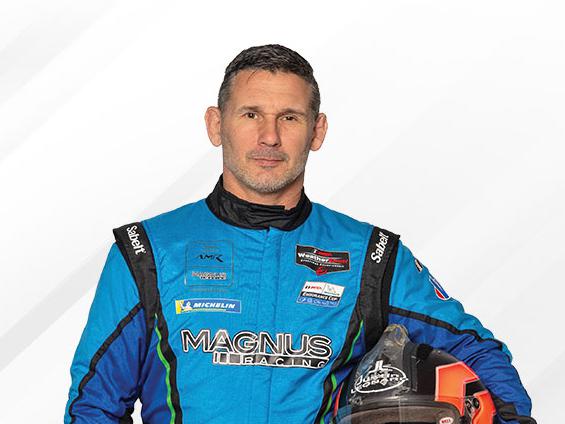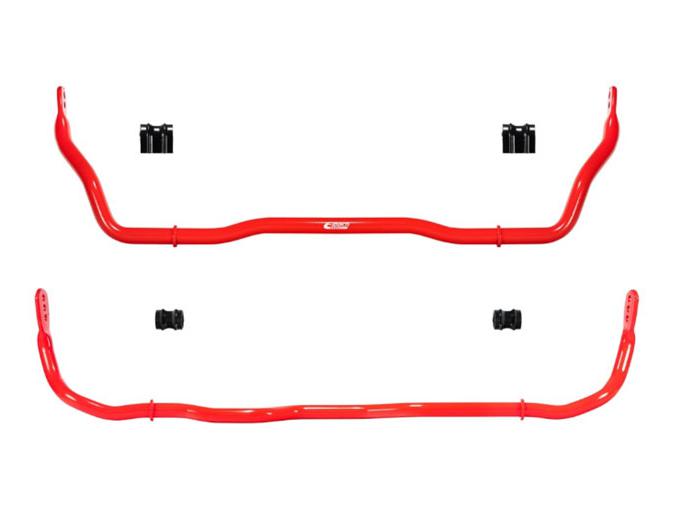Industry Insights: Chris Karamesines
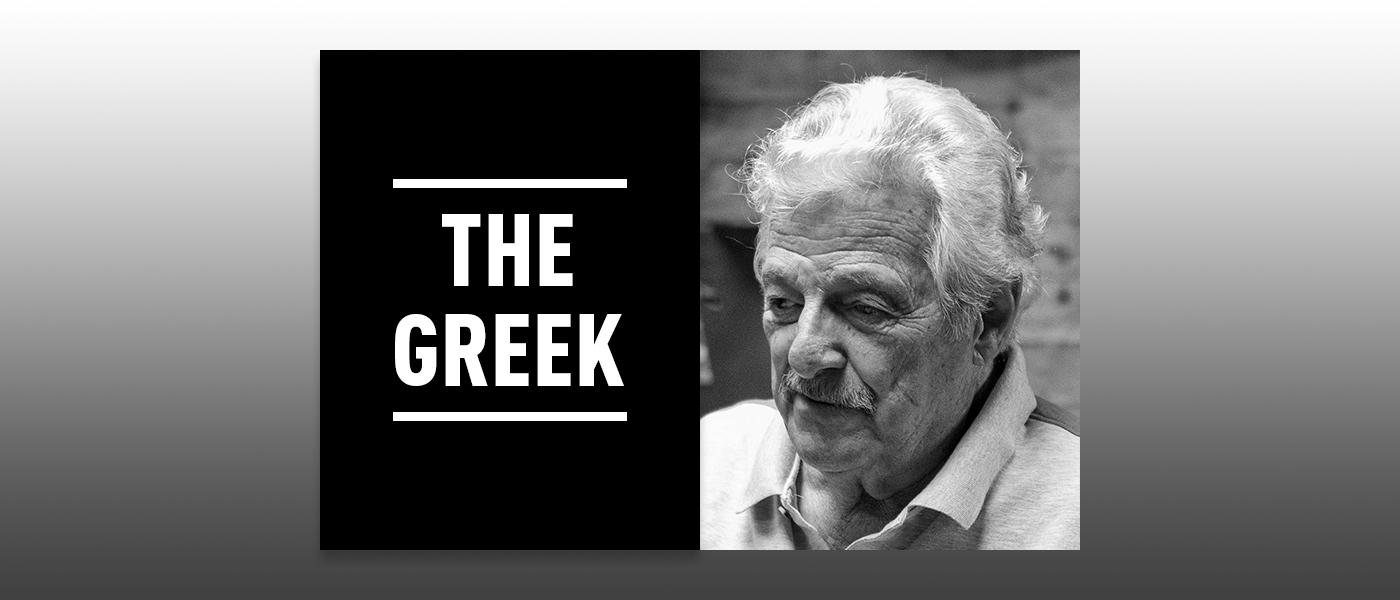
Attributing his longevity in drag racing to the people who supported him, as well as an unwavering work ethic, “The Greek” has taken on a new role in support of his granddaughter’s promising Top Fuel career. Still, even though he’s officially retired, don’t count him out of the driver’s seat just yet.
The legend of Chris Karamesines can be described in two chapters. The first covers his pioneering efforts in the 1950s and 1960s as the sport of drag racing was just putting down roots, when restless souls like Karamesines fashioned hand-built cars and barnstormed throughout America. That led to the second chapter, when Karamesines went on to forge an amazing career of driving Top Fuel dragsters in NHRA competition (and elsewhere) for a stunning seven decades.
There are veteran racers; there are legends; and then there is Karamesines, whose driving career spanned a period that is absolutely unmatched. This past October, Karamesines—revered by the drag racing community as “The Greek”—suited up to race a Top Fuel car at World Wide Technology Raceway in Madison, Illinois, at the age of 88, making it into the first round of eliminations. You heard right: an 88-year-old man still making competitive passes. (It is worth noting that his precise birth year is the subject of lingering debate, with the exact date ranging from 1928 to 1931. He merely smiles and shrugs when asked for confirmation.)
In late 2020, Karamesines announced that he would be stepping aside in 2021 to yield the seat to his granddaughter, Krista Baldwin. It seemed reasonable that an 89-year-old would consider retirement; but he has held such an iconic presence in the sport for so many years that it is difficult to contemplate drag racing without “The Greek” still actively competing.
A native of Chicago, Karamesines began racing in 1951 after returning from service overseas with the US Army. He soon began building dragsters and racing engines as a way to pay the bills and keep himself racing, launching a machine shop and later a speed shop. On April 4, 1960, Karamesines recorded the world’s first unofficial 200-mph quarter-mile pass at Alton, Illinois. Throughout that era, Karamesines—along with good friend Don Garlits—toured extensively while match-racing, though he eventually settled into a long career in “organized” competition.
A measure of Karamesines’ popularity—and respect—was evident in later years when a host of friends and fellow competitors stepped up to offer parts, pieces, and complete cars in order to help prolong his participation. Forrest Lucas of Lucas Oil Products stepped up with a sponsorship deal “for as long as Chris wants to race.” Don Schumacher Racing also provided extensive support to the living legend.
A member of the Motorsports Hall of Fame of America and the International Drag Racing Hall of Fame, Karamesines continues to keep a busy pace. As he recently cleared snow at his Chicago shop, he paused to share some reflections with Industry Insights.
PRI: You’ve had such an amazing, enduring run, Chris, it seems impossible that you’d actually retire. What led to your decision to step away from driving?
Karamesines: My biggest thing was that I wanted to have Krista in the car. That felt like it would be more fun. She’s been waiting to do this, and I’m young enough to keep going for a while. I might jump in the car and make a pass now and then, if I need to.
PRI: How long was the idea of retirement on your mind, the idea of stepping aside so that Krista would have an opportunity?
Karamesines: Once she started thinking about driving alcohol cars, I started thinking about it. I figured it would be nice to step aside and watch her race. She drove the alcohol cars real well, passed with flying colors, and I was happy with that. I am willing to help her out as long as I can, but before long she’ll probably be racing on her own.
PRI: I’m just going to go ahead and say it: 60-plus years at the wheel of a Top Fuel dragster, that is just amazing. Naturally, all of us want to know your secret to staying so fast for so long.
Karamesines: The biggest thing was that I enjoyed what I was doing. That’s probably the secret. I started racing Top Fuel in 1964, and I’ve been drag racing since 1952. Once I got out of the service, I thought racing would be the best thing for me because I liked going fast. And I just kept following it from there. And the people I met, the things I had to build to keep going, that was interesting.
I got started doing machine work and things, and that got us building motors and stuff. Everywhere I went—California, Florida, everywhere—people were nice to us. They wanted to take us home, they wanted to be with us. It was the people, I think, that kept me going.
PRI: You made your first 200-mph pass on April 24, 1960—said to be the first 200-mph run in drag racing history. When we see pictures of those vintage cars and think about going 200 mph, it definitely does not look comfortable. At the time, did you have any concerns about that kind of speed in those cars?
Karamesines: Back then, when you’re young, you’re not thinking about safety. Nothing scared you, really. You’d get into anything and drive it. As the cars got bigger, there were more things we had to do for safety. NHRA made sure we did what we needed to do. It was fun going fast, and I still enjoy it.
PRI: When you think back to those older cars—the 1950s and 1960s—what comes to mind? Were those cars hard to drive?
Karamesines: Not really. As long as they were put together right. They had their moments, yes. If something broke, or you blew a blower off, stuff like that, that was a problem. But that was part of it. They were built pretty decent for what we were doing.
PRI: Professional drag racing has changed so dramatically since you started. It would be easy to ask what has changed the most, but from your perspective I suspect everything—truly, everything—has changed. Is that true?
Karamesines: You’re right. Everything is different. We could build a car for $200, $500...not much money. You can’t do that anymore. Today, you’re looking at $250,000 to build a car. And it takes more people. Back then you had two people and yourself, and that was the team. Maybe four people total, sometimes. We used to race 50 races a year, exhibition races. California to Maine to Florida, wherever. It was the same with (Don) Garlits—he and I probably did more traveling than anybody back then. And then you had Shirley (Muldowney) and (Connie) Kalitta, but they came a little bit later.
PRI: So naturally, this is the question: Is drag racing better today than in the 1950s? Or any other era?
Karamesines: I think each era is different. We would have 2,000 people in the stands, now you’re looking at 75,000 or 100,000 people. As things go on for the sport, everything grows. And that means it’s different. Better? I don’t know.
PRI: For better or worse…is there an element of those early days that you miss most?
Karamesines: (Laughing.) It’s hard to say what I miss the most. I mean, it was fun for me the whole time. I never had a bad day in drag racing. I’ve enjoyed the people, and that’s what kept me going. Seriously. I don’t care where I went, the people were there for me. If I needed something, they would help me.
PRI: I suspect that your last name has been mispronounced more than any name in racing history. I saw a great story the other day from your friend (Don) Garlits, who first recalled hearing of a racer up in Chicago named “Chris Kerosene” in the 1950s. I’m going to guess that it was just easier to go with “The Greek.”
Karamesines: That was it (laughing). And you’re probably right about my name being mispronounced a lot. In those early years I was teamed up with Bob Schreiber and Don Maynard, and we were using a Chrysler motor they called “the chiseler.” So that’s what we called our car, “The Chizler.” That was easier than using our names. As time went on Maynard died, the other kid found something else to do, and I went off on my own.
PRI: It’s easy for us to look back at those early years and assume they were fun. And I’m sure they were, in many ways. But I also suspect it was tough to make a living at drag racing and keep things together.
Karamesines: Oh yes, it was tough to a certain extent. That’s why I started building motors, to keep myself going. I had a machine shop and I still, up to about 15 years ago, kept the machine shop. And I opened a speed shop as well. It was hard to balance sometimes but I still enjoyed traveling, getting out on the road and going racing.
PRI: You were hesitant to use some of the safety devices that came along in recent years, such as a head-and-neck restraint. When you’ve raced for such a long time, is it hard to adopt some of the newer technologies like that?
Karamesines: The only time I had a problem with things like that was when they asked you to change things when you got to the race track, right there. They should have sent us a letter to tell us what we needed to do at the next race, so we could prepare and make arrangements for the changes. They had a bad habit of waiting until we got to the races to tell us what we needed to change. They’d say, “Oh, just put a tin can around that coupler, that’ll be alright.” Well, that was the wrong thing to tell me. You can’t go to the track and build your car; that’s done in the shop before you hit the road. Today they send a message out in advance, which is the right way to do it.
PRI: Obviously, you’ve followed the career of your granddaughter, Krista Baldwin, from the beginning. As you watched Krista work toward advancing her career, what’s the greatest challenge today for a young person who wants to race?
Karamesines: The finances are the biggest challenge. That, and finding a couple of guys to work on the car and be faithful to it.
PRI: Some things never change, I guess. It always comes down to money and people.
Karamesines: That’s right. Krista, when she was 11 years old, I had her in my race car when we traveled around the country. Her dad (Bobby Baldwin) wanted to drive my car, too. All along, Krista has been right there with us. If you see her drive the car, you can see that. She got that from her dad and me.
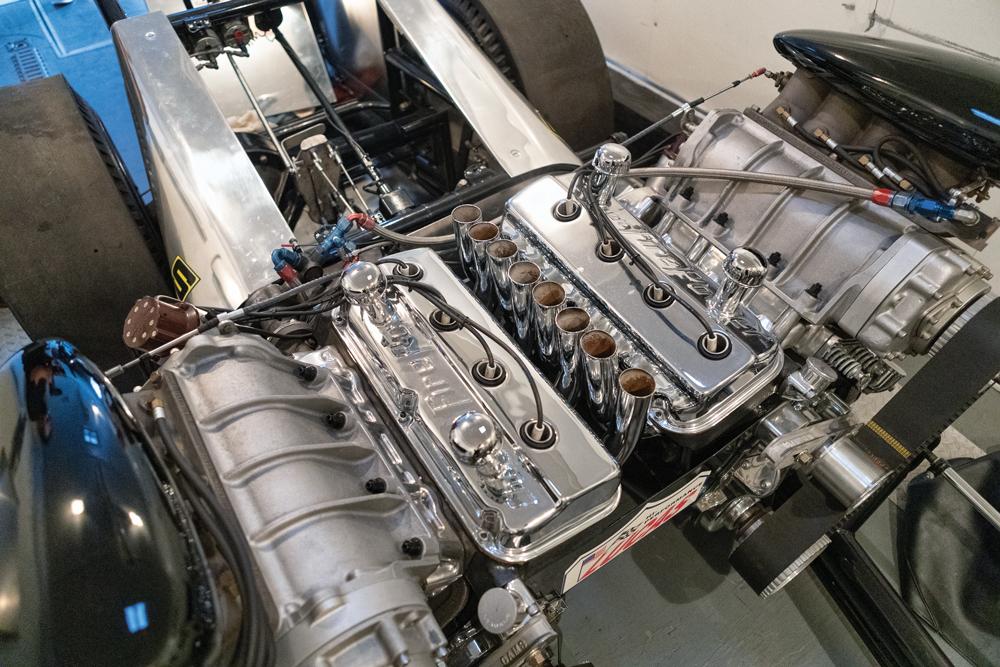
PRI: In the beginning, you were a racer. But fairly quickly you had to become a businessman in order to survive. The racing business has never been easy. What were some of the hard business lessons in those early days?
Karamesines: You’ve got to watch out for some of your friends who are working for you, because they’re the ones who go out the back door with your profits. But other than that, it came down to just loving what I was doing, basically, and having a great time while we were doing it.
PRI: One of the things you are known for is your work ethic. People say they couldn’t keep up with you and that nobody worked harder than you. Where did you get that work ethic?
Karamesines: (Laughing.) Believe me...when people can’t do what you tell ’em, you end up doing it yourself. You hire somebody and you end up doing his work, too. When I got out of the service, I was ready to go to work wherever I could and do what I had to do. And many a racer came to Chicago where we built their motor, put the rearend in their car, and put ’em up overnight. And we’d help them get race dates, things like that. From (Don) Prudhomme to Tommy Ivo, you name it. Guys from California, everywhere. We serviced everybody. And that was a lot of work, yes.
PRI: Is there a key to how you treat sponsors? What’s the advice you would give people on how to work with their sponsors?
Karamesines: It’s hard to answer that now, because everything is changing. Krista is working hard to find the right people to help her. And I can help her, maybe go with her to see the sponsors we’re thinking about. That’s part of the process. And I’ll be one of her sponsors with my parts and things, so we don’t have to spend money on some of the things. But a lot of people have helped me over the years, and the help they gave me was terrific. They stuck with me through thick and thin.
PRI: We’re now seeing electric vehicles in drag racing. What’s your opinion of electric dragsters?
Karamesines: That’s for the young people. If they like cars like that, go for it.
PRI: Your life has been eventful, and the number of people you’ve encountered is really significant. What has brought you the most joy through the years? Survival? Friendship? Competition? What made you the happiest?
Karamesines: Friendship. No doubt about it. The people we met all over the country, that’s the most important thing. People would do anything for us. And it’s hard to find people like that, outside of racing. When things went wrong, people hurried over to help. Lots of people. (Connie) Kalitta, Jim Head, so many people. They’d watch what I was doing, and they knew when I needed something. They worried about the old guy.
PRI: And I suspect that made you want to help people in return.
Karamesines: That’s about it. We’ve helped people, too. Bobby Lagana and his family, we helped them when they were getting started. So many people, I can’t remember all the names. Good people.
PRI: Now that you’re officially retired, what does that mean? Will you still run an occasional race? How about some passes in one of your old cars?
Karamesines: When I said I was retired, that didn’t mean I was going to quit drag racing. I’ve still got my two older cars, so I could do different things. I’ve got a twin-engine car, I’ve got stuff that I can go out and enjoy myself, give myself something to do. I’m not a guy who will just sit at home and watch TV.
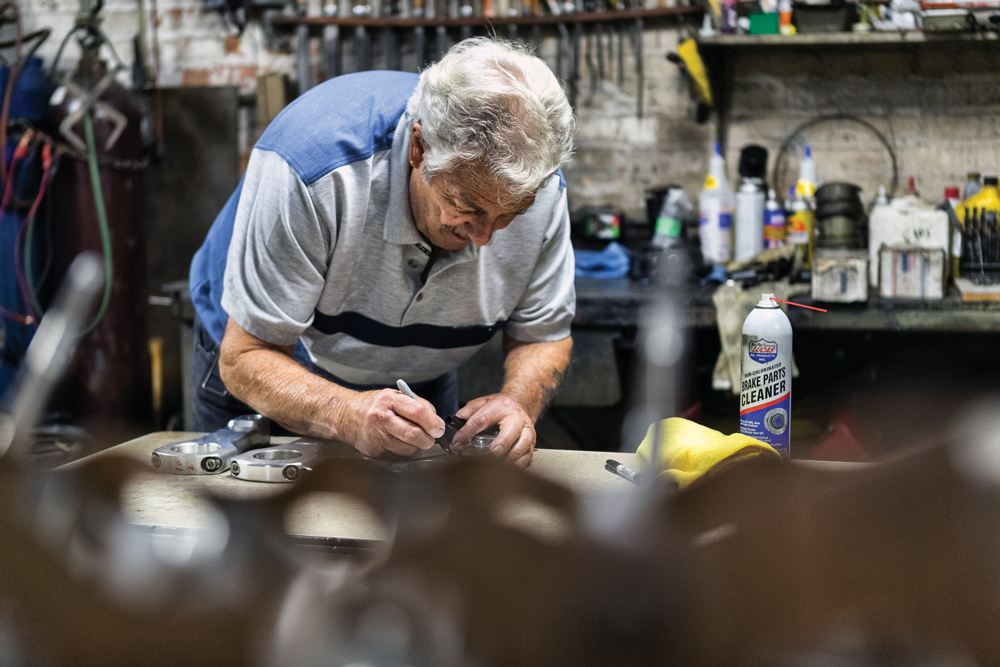
PRI: Those older cars, from the 1950s and 1960s, they remain very popular with fans. They love it when a guy like “The Greek” comes out and makes a few passes. It’s almost like a fascination with that era. Why are people so interested in those early cars, and early personalities?
Karamesines: Back then, it was different. We were limited as far as the number of places we could go racing. People would come out to the track and once they got to meet us, they would sit right beside our pit and watch us work on the car. Pretty soon they were bringing their kids out with them and would introduce us. “This is Chris Karamesines, and he did this, he did that...” and it never stopped.
PRI: I think that’s good!
Karamesines: It sure was good. That’s where it’s at.
PRI: Normally, Chris, we would wrap this up by wishing you well in the future. But I want to just say thank you. You’ve been a good friend to a countless number of people in the sport for so many years, and you’ve given drag racing everything you’ve got. So on behalf of a lot of people, I say thanks, and I mean it. And thank you for giving us some of your time.
Karamesines: Well, thank you, Dave. I’m happy to have the chance to talk to you.
Our Dinner With ‘The Greek’
“Hey, you want to grab a beer after this?”
Listen…you don’t say no to that offer from a legend like The Greek. Karin knew it, we knew it, and truth be told, he could have asked us to help him move a dead body and we all would have said yes in a heartbeat.
When The Greek says go, you go. And so there we were, waiting in the PRI Road Tour van as Chris locked up his incredible shop, walked slowly to his vintage Jaguar, and pulled out onto the road heading to the bar. He claimed it was just around the corner but…it took a bit longer than we expected to get there. Where was he taking us? Where were we going? How long has The Greek been going to this place?
When we arrived at J.C.’s Pub, it looked like a place where only the locals would go. Concerned, slightly, that our van might not be there when we got out, we looked for a well-lit place to park. The Greek, however, pulled up, jumped out of the Jag, and waltzed inside. Windows down, car unlocked, not a care in the world. You could tell this wasn’t a place where anyone was going to mess with The Greek or his new gang of starry-eyed content creators.
Through the double doors we went, only to be greeted by a literal wall of photos of The Greek. Not “a photo of The Greek on a wall,” but an entire wall dedicated to the man, the myth, the legend himself. We were immediately drawn to different photos: Some of Chris as a 16-year-old boy heading into military service, where he would proudly serve our country during the Nuremberg trials; some as a hair-on-fire maniac doing twin-engine, quarter-mile-long burnouts; some of him with the Chizler—and all with a smile on his face. Each photo another story, each a glimpse into the life of this living legend.
“Hey sir…wait, where did he go?”
Oh, yeah, this is the best part.
You see, The Greek had invited us to dinner, but he wasn’t planning to eat dinner with us. He had his wife and his friends already holding down a corner of the bar…. He was here to hang with them. A weekly tradition for their close-knit group. We had a table—The Greek had seen to that—but there wasn’t a seat for the legend. He had drinks to drink, tales to tell, and friends to laugh with. He wasn’t planning to give that up for anything, especially not for us. Now don’t get me wrong here, The Greek was giving us a once-in-a-lifetime VIP experience. We had a table at his place; we had J.C.’s owner giving us a tour; we had great food, great drinks, and many laughs. We met The Greek’s incredible wife. We met his friends. He came by to check on us, bought us a round, recommended food (of course there is a menu item named after him…), and got us dessert. But he didn’t ever stop being The Greek, and that meant he wasn’t going to miss his weekly hang with his crew. And we respected that. More respect for that than I can probably describe here…but it was as if we were allowed to really see the legend as he really was. No persona, no fake bravado, just a small glimpse into his real life, as it was and as it probably always has been.
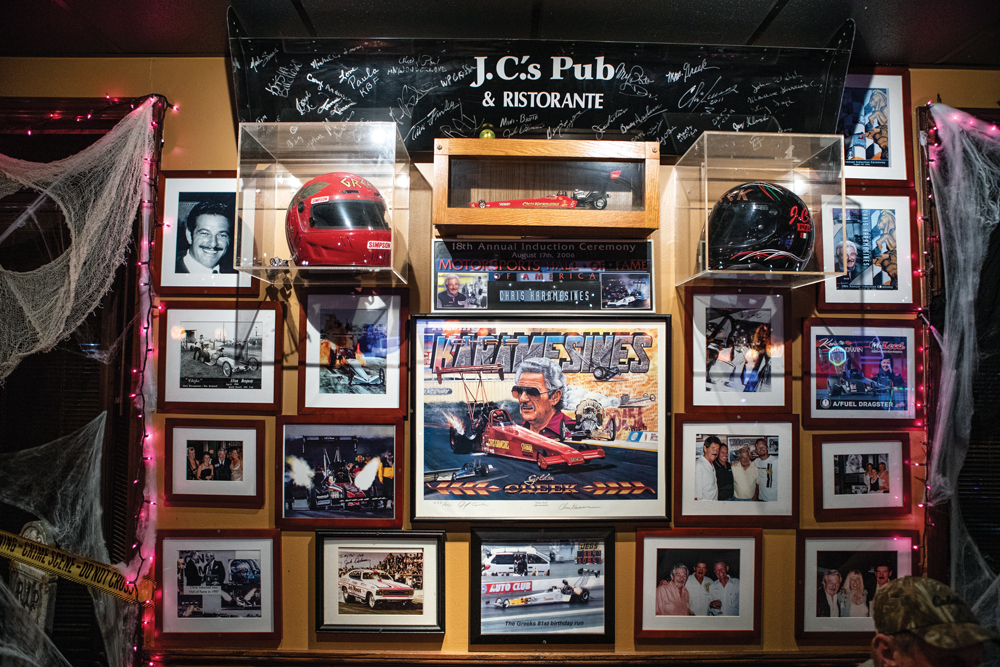
And just like the visit to his shop, we were lucky enough to see the real Chris Karamesines. A real-life legend in the flesh, living his life in a way that seemed so ordinary to him (you know, as if mere mortals are building Top Fuel engines in their private little garage and then driving to a restaurant with a shrine in their honor on the wall…) and not caring who saw it.
Chris isn’t like any other person I’ve ever had the pleasure of being around. He is the true embodiment of Racing, with a capital R. From tinkering with tank engines during the war, to being the first dragster to run 200 miles an hour in the quarter, to going 305 mph at 86 years old (!), and every single step in between, The Greek is more than his accomplishments. He is more than the stories, and the championships, and the twin-engine. Chris Karamesines is the dream we all have when we give it all up to get involved with racing. As he says, “It’s been 63 years of fun, and I have loved every minute of it.” Here’s to you, Greek. —Justin Cesler
 MEMBERSHIP LOGIN
MEMBERSHIP LOGIN JOIN PRI
JOIN PRI
